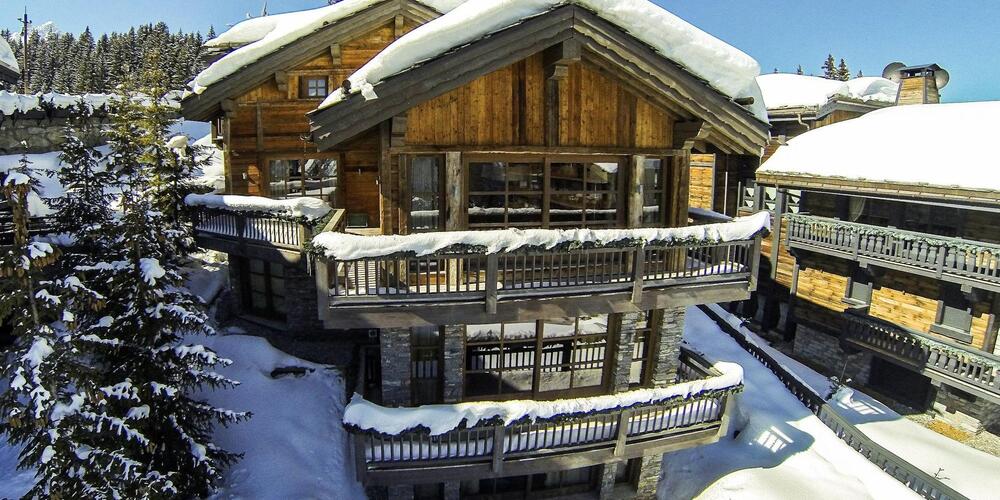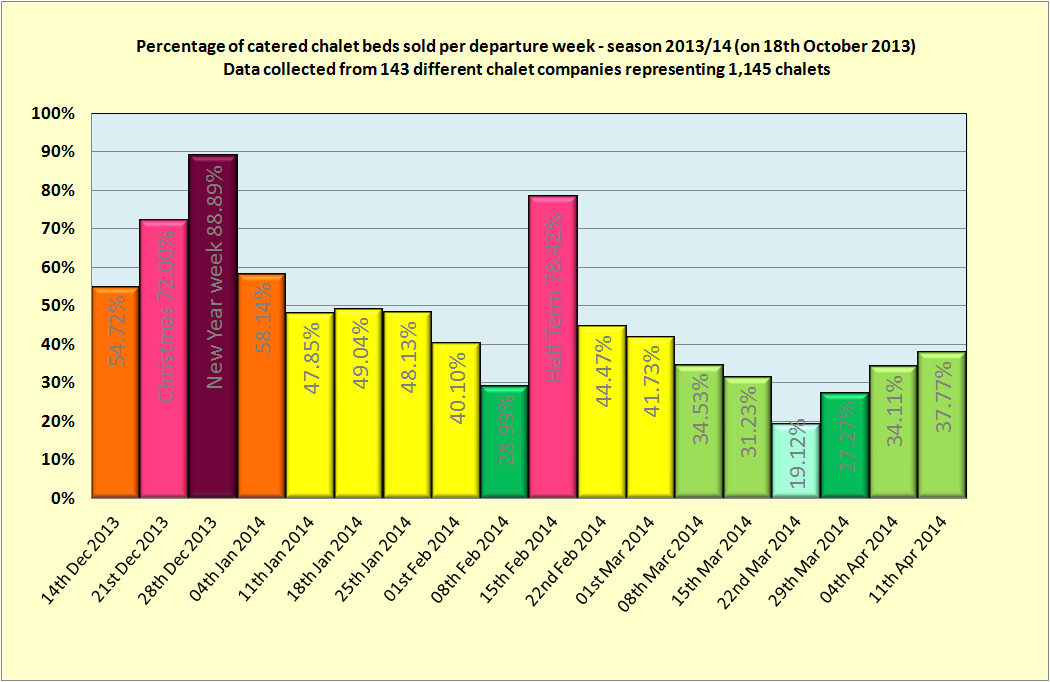
Comparing Winter 12/13 to Winter 13/14 in the Chalet Holiday Market
Simon Hoskyns | 24 October 2013 | Ski Chalets
Since we deal with nearly 150 different ski chalet holiday companies and have day by day data on the availability for these chalet companies then it’s probably fair to say that we have chalet holiday market data from a large chunk of the entire UK ski holiday market. If we want to get a bit more specific we have seasonal availability for approximately 1,150 separate chalets across the Alps which accounts each week for 14,700 chalets beds. Over the course of a whole winter season this sector of the UK ski holiday market accounts for over 200,000 skiers – approximately 20% of the entire UK annual skiing population.
The long and the short of it is that the data in the bar graphs below is both accurate and statistically speaking, significant.
The two graphs were compiled on 18th October. The first was in 2012 and the second just last week. They show the state of the chalet market market sales for last winter and also this winter.
 UK chalet holiday market sales analysis 2012/13 season (as on 18th October 2012)
UK chalet holiday market sales analysis 2012/13 season (as on 18th October 2012)
Chalet Holiday Market Sales for Christmas and New Year
What is clear to see is that Christmas and New Year weeks were well sold by the 18th October. To some extent the February Half Term week was also sold quite well by October. The weeks later in the season for the end of March and early April are less well sold simply as they were 5-6 months in the future.
On its own the bar graph above is interesting to a point. However, the data gets more interesting when you compare it year on year with this current winter season. See below…
 UK chalet holiday market sales analysis 2013/2014 season (on 18th October 2013)
UK chalet holiday market sales analysis 2013/2014 season (on 18th October 2013)
What is immediately obvious is that the New Year week is more heavily sold for the same point in time, as is the February Half Term week (79% as opposed to 53%). We are not sure the reasons behind the good sales for the New Year week but suspect that the good snow over the last two seasons and the way that the public holidays fall this year are two reasons to create greater demand.
Chalet Holiday Market Sales for February Half Term
The reason behind the huge increase in sales (to date) for the February Half Term week is that the bulk of the UK schools have the same week as their mid-term holiday whereas last year there was a fairly even split across two separate weeks.
Those skiers that are not dependent on school holiday dates (ie. groups without school age children) avoid mid February like the plague. This explains why the week starting 08th/09th February is very under sold (only 29%). Those parties with school age children cannot go that week as it’s not a school holiday week and those parties without children avoid it as they think it is a school holiday period. Net result = poor sales.
The other week of the ski season calendar that looks like it might be a sticky one to sell for chalet companies is the week starting 22nd/23rd March 2014. At the moment this is just 19% sold.
We know, and the chalet holiday companies also know, that these two dud weeks of the 2013/14 season may end up discounted in order to sell to a late deal hungry market. Only time will tell if we are right (and other factors such as the abundance and quality of snow will come into play) but if you are a deal hunter then we suggest setting aside either the 08th/09th February or the 22nd/23rd March 2014 week aside.
Chalet Holiday Market Sales for the Entire Winter Season
The other interesting statistic that we can collate is how well the winter season has sold as a whole. On the 18th October 2012 the entire 2012/13 season was 54% sold. This season to date is just 46% sold. We haven’t analysed each separate week to see where the differences lie. However, although New Year week and Half Term week are in advance for last season’s sales for the same point in time other weeks in January and March appear are well sold. Perhaps we can put this down to the warm autumn that we are currently experiencing – it doesn’t make people think skiing.
Unlike most people, those in the ski holiday business long for longer, darker nights; frosty mornings and days with clear, cold skies. Nothing works as well as a cold snap at this time of year to boost ski holiday sales.


.jpg)

